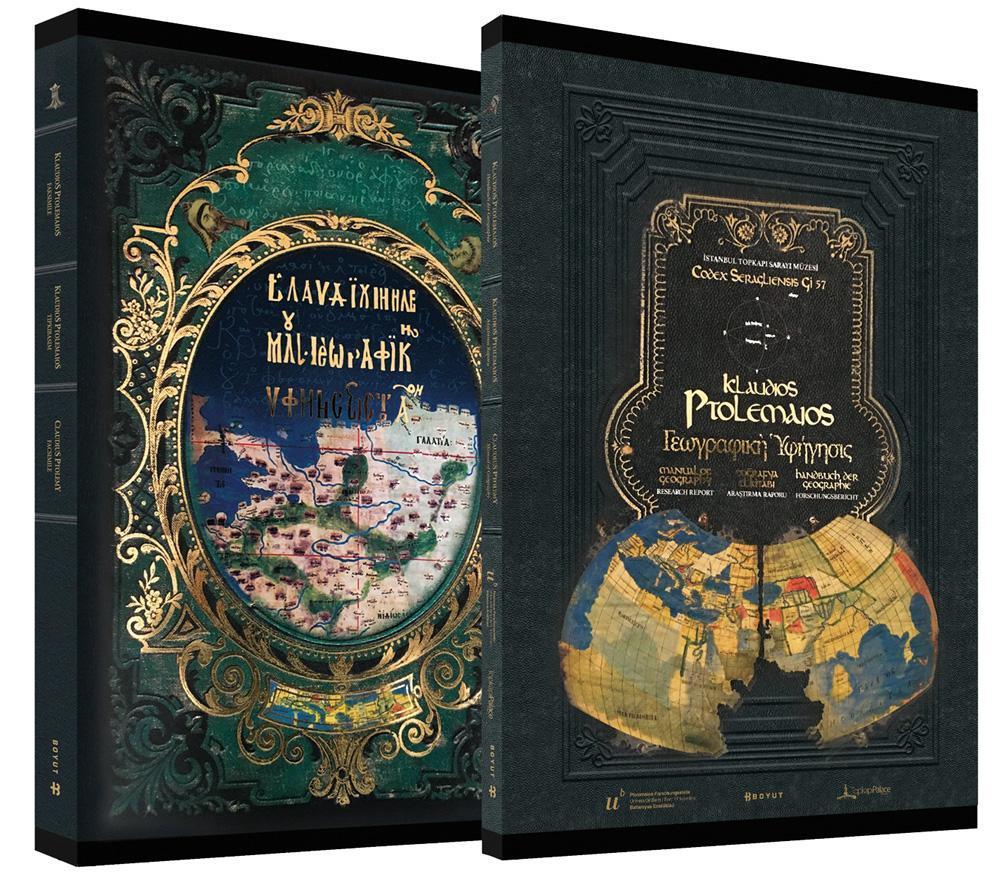
The facsimile of Klaudios Ptolemaios’ “Manual of Geography,” which was translated with the order of Sultan Mehmet the Conqueror and is one of the rarest artifacts at the Topkapı Palace, was introduced on March 1 in a press conference at Istanbul Technical University (ITU).
Showing the map during the conference, ITU Rector Professor Mehmet Karaca said Ptolemaios was a significant scientist in his era.
ITU academic Celal Şengör said the Ptolemaios Atlas, which was produced in the 2nd century, got lost in the 7th century.
He said Europe forgot about the atlas after the 7th century “but it survived in the Islamic world and Muslim geographers developed it. It is very interesting that they fixed its mistakes. It was forgotten, too, after the Islamic geography collapsed in the 11th century.”
Şengör said that the atlas was found again in the 13th century.
“Maximus Planudes reproduced it; a few copies were written. One of these copies is today in the Vatican City and is in a very good condition. But the copy we have is more valuable than that. Because ours is the second projection printing, the edges of which is round and which was recommended by Ptolemaios. But the one in the Vatican is a conic projection,” he added.
Şengör said the book was obtained by Sultan Mehmet the Conqueror in 1464.
“When Istanbul was being plundered, he said ‘anyone can take anything, but the books are mine.’ He collected the books on science and culture, and nothing on religion.”
Şengör said the sultan got Amirutzes, a top Byzantium state official, to make a world map.
“This book was found when the map was being prepared. The sultan admired it. But after his death, the book had been neglected for a long time. According to Professor Fuchs, who restored the book, it remained underwater for a year in the dungeons of the Topkapı Palace,” he added.
The book was found again in 1926 when Mustafa Kemal Atatürk, founder of modern Turkey, ordered then Old Artifacts General Manager Halil Ethem to take an inventory.
He said that Sultan Mehmet the Conqueror had a magnificent library in the Topkapı Palace and the book was there.
“When taking the inventory, Ethem found all of his books. They can be seen at the Topkapı Palace Library today. It is a treasure, but unfortunately we do not introduce it to the world. Because some of the books were given as gifts, some were stolen and some received damage. There were 5,000 manuscripts, but today we have some 80. Where are the others?”Şengör asked.
He said that the Ptolemaios Atlas was one of two atlases from the ancient ages. “America was discovered thanks to this book. It is very important. It also made most geographical discoveries possible,” he added.
700 years at Topkapı Palace
Boyut Publishing Group Editor-in-Chief Bülent Özükan also noted the importance of the atlas. “It is very exciting to touch these maps, which were drawn in the 13th century according to coordinates written 2,000 years ago, and to take the photos of the pages,” he said.
He said the book remained at Topkapı Palace for 700 years.
“One volume is the research report on the replica only. A very decent article on Sultan Mehmet the Conqueror, written by Celal Şengör, is in this book, too, as well as a very unique portrait of the sultan,” he added.
The introduction of the book was simultaneously made at the University of Bern.
The original atlas, known as the world’s first map, includes 27 unique maps as well as the maps of the Aegean and Anatolia.